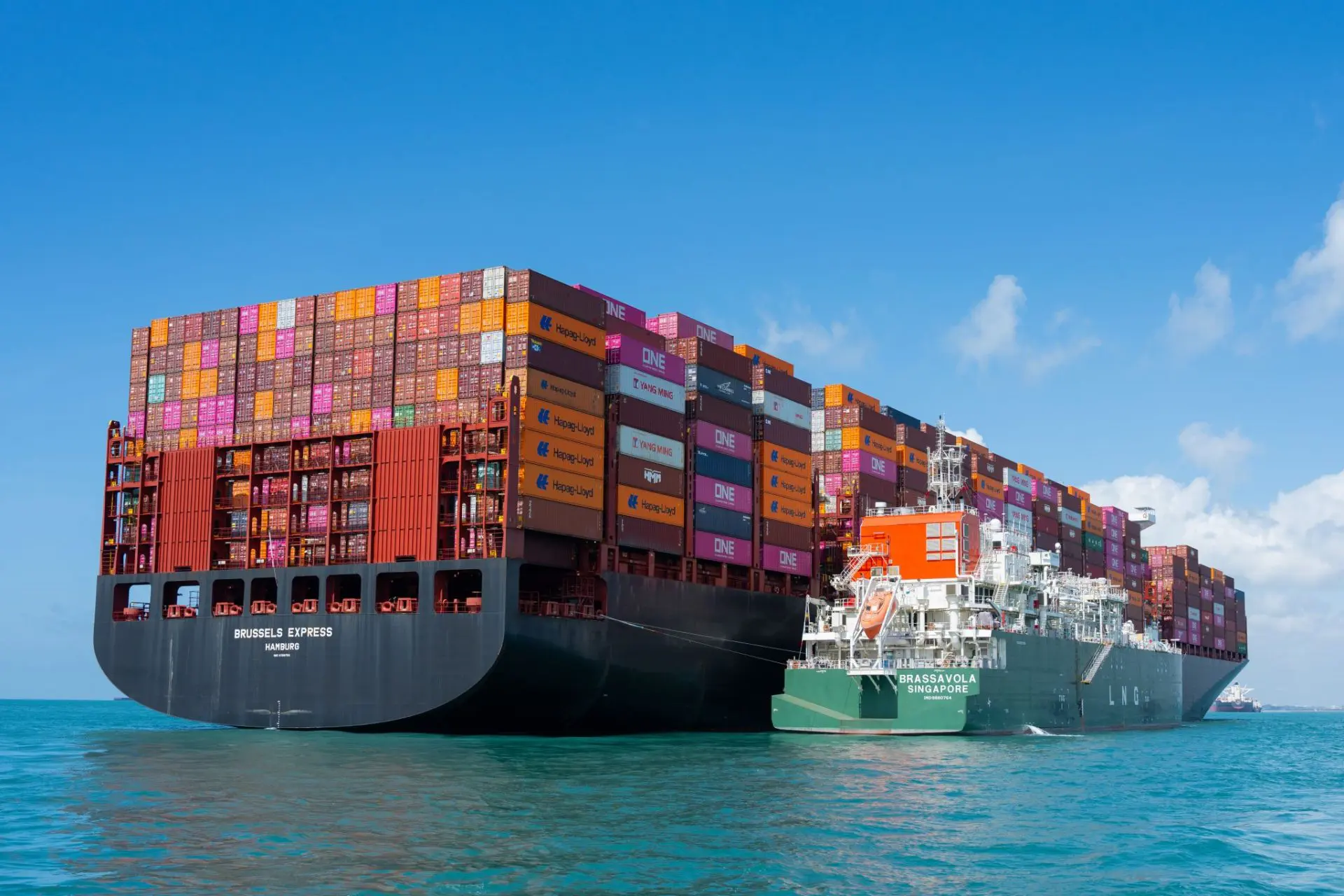This story requires a subscription
This includes a single user license.
DNV said on Tuesday that LNG fuel remains dominant in the container segment, with 13.6 million GT (81 vessels) in the first half of this year, according to data from DNV’s Alternative Fuels Insight (AFI) platform.
Methanol has also shown strong momentum, with 4.6 million GT (40 vessels) ordered across the container, RoPax, tanker, offshore, and car carrier segments.
Ammonia and hydrogen, while still niche, continue to register activity, suggesting early-stage confidence in their long-term potential, DNV said.
Three ammonia-fueled vessels were added to the orderbook, primarily in the tanker and general cargo segments (37.000 GT total), while hydrogen made a return with four vessels (114.000 GT) currently on order.
DNV said that the ordering of alternative-fueled vessels continued to grow in 2025, despite a slowdown in the overall newbuild market.
New orders for alternative-fuelled vessels reached 19.8 million GT in the first six months of 2025, exceeding the 2024 figure by 78 percent.
DNV said this marks a significant shift in capital allocation, as shipowners increasingly prioritize future-ready assets in response to regulatory pressure, fuel availability, and long-term decarbonization goals.
A total of 151 alternative-fuelled vessels were ordered in the first half of 2025, slightly behind the 179 orders placed during the first six months of 2024.
Even so, the overall GT has increased markedly, showing a 78 percent year-on-year growth driven mainly by activity in the container segment, but with notable orders also in the bulker, tanker, and RoPax segments.
According to DNV, this concentration suggests that some of the industry’s most commercially exposed and operationally complex segments are now leading the charge, reinforcing the view that alternative fuels are no longer a fringe strategy, but a mainstream investment decision.
13 LNG bunkering vessels
DNV said that supporting infrastructure is also evolving in parallel with vessel investments.
In the first half of 2025, 13 LNG bunkering vessels were ordered, compared to 62 in operation globally, with February marking the strongest month for this segment with eight orders.
This growth reflects a steady alignment between alternative-fuelled vessel orders and the supporting logistics required to scale their use, particularly for LNG, where bunkering capacity is becoming a critical enabler of continued adoption, DNV said.
DNV previously said that a record of 264 LNG-powered ships were ordered in 2024, while the number of LNG bunker vessels in operation grew from 52 to 64 over the last year.
752 LNG-powered ships in operation
DNV’s platform shows that there are now 752 LNG-powered ships in operation and 617 LNG-fueled vessels on order.
Moreover, 191 LNG-powered containerships and 95 LNG-powered car carriers are in operation, followed by 78 crude oil tankers, and 75 oil/chemical tankers.
As per vessels on order, LNG-powered containerships account for a big part of the orders with 342 units. Shipping firms also ordered 115 car carriers, 46 crude oil tankers, 42 oil and chemical tankers, and 26 cruise ships.
These statistics do not include smaller inland vessels or dual-fuel LNG carriers.

